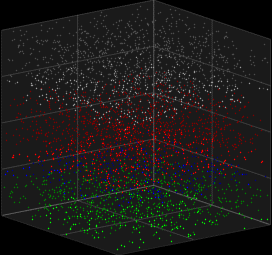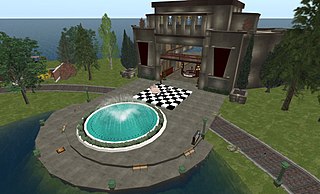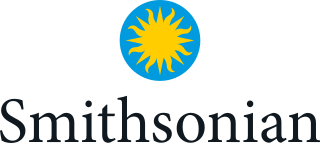The Association for Computing Machinery (ACM) is a US-based international learned society for computing. It was founded in 1947 and is the world's largest scientific and educational computing society. The ACM is a non-profit professional membership group, reporting nearly 110,000 student and professional members as of 2022. Its headquarters are in New York City.

Computing is any goal-oriented activity requiring, benefiting from, or creating computing machinery. It includes the study and experimentation of algorithmic processes, and the development of both hardware and software. Computing has scientific, engineering, mathematical, technological, and social aspects. Major computing disciplines include computer engineering, computer science, cybersecurity, data science, information systems, information technology, and software engineering.

Jerry Eugene Pournelle was an American scientist in the area of operations research and human factors research, a science fiction writer, essayist, journalist, and one of the first bloggers. In the 1960s and early 1970s, he worked in the aerospace industry, but eventually focused on his writing career. In an obituary in Gizmodo, he was described as "a tireless ambassador for the future."

Janet is a high-speed network for the UK research and education community provided by Jisc, a not-for-profit company set up to provide computing support for education. It serves 18 million users and is the busiest National Research and Education Network in Europe by volume of data carried. Previously, Janet was a private, UK-government funded organisation, which provided the JANET computer network and related collaborative services to UK research and education.
NeXT Computer is a workstation computer that was developed, marketed, and sold by NeXT Inc. It was introduced in October 1988 as the company's first and flagship product, at a price of US$6,500, aimed at the higher-education market. It was designed around the Motorola 68030 CPU and 68882 floating-point coprocessor, with a clock speed of 25 MHz. Its NeXTSTEP operating system is based on the Mach microkernel and BSD-derived Unix, with a proprietary GUI using a Display PostScript-based back end. According to the Science Museum Group, "The enclosure consists of a 1-foot die-cast magnesium cube-shaped black case, which led to the machine being informally referred to as 'The Cube'."

Retrocomputing is the current use of older computer hardware and software. Retrocomputing is usually classed as a hobby and recreation rather than a practical application of technology; enthusiasts often collect rare and valuable hardware and software for sentimental reasons.

The Computer History Museum (CHM) is a museum of computer history, located in Mountain View, California. The museum presents stories and artifacts of Silicon Valley and the Information Age, and explores the computing revolution and its impact on society.

Maze, also known as Maze War, is a 3D multiplayer first-person shooter maze game originally developed in 1973 and expanded in 1974. The first version was developed by high school students Steve Colley, Greg Thompson, and Howard Palmer for the Imlac PDS-1 minicomputer during a school work/study program at the NASA Ames Research Center. By the end of 1973 the game featured shooting elements and could be played on two computers connected together. After Thompson began school at the Massachusetts Institute of Technology (MIT), he brought the game to the school's computer science laboratory in February 1974, where he and Dave Lebling expanded it into an eight-player game using the school's Digital Equipment Corporation PDP-10 mainframe computer and PDS-1 terminals along with adding scoring, top-down map views, and a level editor. Other programmers at MIT improved this version of the game, which was also playable between people at different universities over the nascent ARPANET. Due to the popularity of the game, laboratory managers at MIT both played it while also trying to restrict its use due to the large amount of time students were spending on it. There are reports that the Defense Advanced Research Projects Agency (DARPA) at one point banned the game from the ARPANET due to its popularity.

Pegasus was an early British vacuum-tube (valve) computer built by Ferranti, Ltd that pioneered design features to improve usability for both engineers and programmers. It was originally named the Ferranti Package Computer as its hardware design followed that of the Elliott 401 with modular plug-in packages. Much of the development was the product of three men: W. S. (Bill) Elliott (hardware); Christopher Strachey (software) and Bernard Swann. It was Ferranti's most popular valve computer with 38 units being sold. The first Pegasus was delivered in 1956 and the last was delivered in 1959. Ferranti received funding for the development from the National Research Development Corporation (NRDC).

A virtual museum is a digital entity that draws on the characteristics of a museum, in order to complement, enhance, or augment the museum experience through personalization, interactivity, and richness of content. Virtual museums can perform as the digital footprint of a physical museum, or can act independently, while maintaining the authoritative status as bestowed by the International Council of Museums (ICOM) in its definition of a museum. In tandem with the ICOM mission of a physical museum, the virtual museum is also committed to public access; to both the knowledge systems embedded in the collections and the systematic, and coherent organization of their display, as well as to their long-term preservation. As with a traditional museum, a virtual museum can be designed around specific objects, or can consist of online exhibitions created from primary or secondary resources. Moreover, a virtual museum can refer to the mobile or World Wide Web offerings of traditional museums ; or can be born digital content such as, 3D environments, net art, virtual reality and digital art. Often, discussed in conjunction with other cultural institutions, a museum by definition, is essentially separate from its sister institutions such as a library or an archive. Virtual museums are usually, but not exclusively delivered electronically when they are denoted as online museums, hypermuseum, digital museum, cybermuseums or web museums.

The National Museum of Computing is a UK-based museum that is dedicated to collecting and restoring historic computer systems, and is home to the world's largest collection of working historic computers. The museum is located on Bletchley Park in Milton Keynes, Buckinghamshire. It opened in 2007 in Block H – the first purpose-built computer centre in the world, having housed six of the ten Colossus computers that were in use at the end of World War II.
David Nagel is an American manager. He held executive positions in a wide variety of technology companies and organizations.
The following outline is provided as an overview of and topical guide to computer engineering:

Smithsonian Libraries and Archives is an institutional archives and library system comprising 21 branch libraries serving the various Smithsonian Institution museums and research centers. The Libraries and Archives serve Smithsonian Institution staff as well as the scholarly community and general public with information and reference support. Its collections number nearly 3 million volumes including 50,000 rare books and manuscripts.

The Centre for Computing History is a museum in Cambridge, England, established to create a permanent public exhibition telling the story of the Information Age.
Informatics is the study of computational systems. According to the ACM Europe Council and Informatics Europe, informatics is synonymous with computer science and computing as a profession, in which the central notion is transformation of information. In some cases, the term "informatics" may also be used with different meanings, e.g. in the context of social computing, or in context of library science.

Museum informatics is an interdisciplinary field of study that refers to the theory and application of informatics by museums. It represents a convergence of culture, digital technology, and information science. In the context of the digital age facilitating growing commonalities across museums, libraries and archives, its place in academe has grown substantially and also has connections with digital humanities.

David Fielding Hartley FBCS is a computer scientist and Fellow of Clare College, Cambridge. He was Director of the University of Cambridge Computing Service from 1970–1994, Chief Executive of United Kingdom Joint Academic Network (JANET) 1994–1997, and Executive Director of Cambridge Crystallographic Data Centre (CCDC) 1997–2002. He is now much involved with the National Museum of Computing.

A conservation scientist is a museum professional who works in the field of conservation science and whose focus is on the research of cultural heritage through scientific inquiry. Conservation scientists conduct applied scientific research and techniques to determine the material, chemical, and technical aspects of cultural heritage. The technical information conservation scientists gather is then used by conservator and curators to decide the most suitable conservation treatments for the examined object and/or adds to our knowledge about the object by providing answers about the material composition, fabrication, authenticity, and previous restoration treatments.














